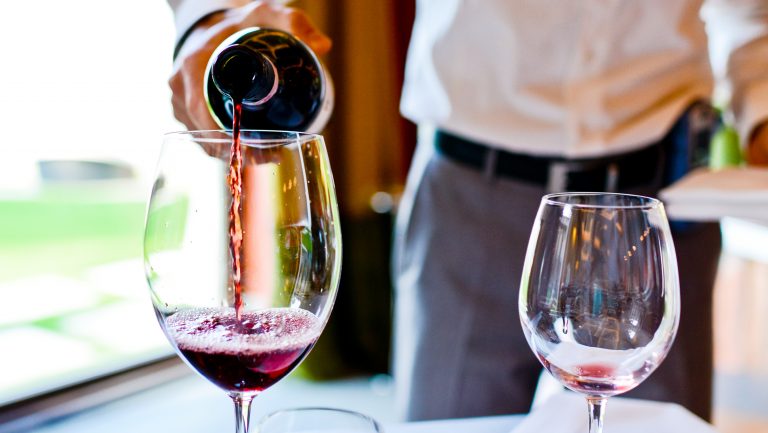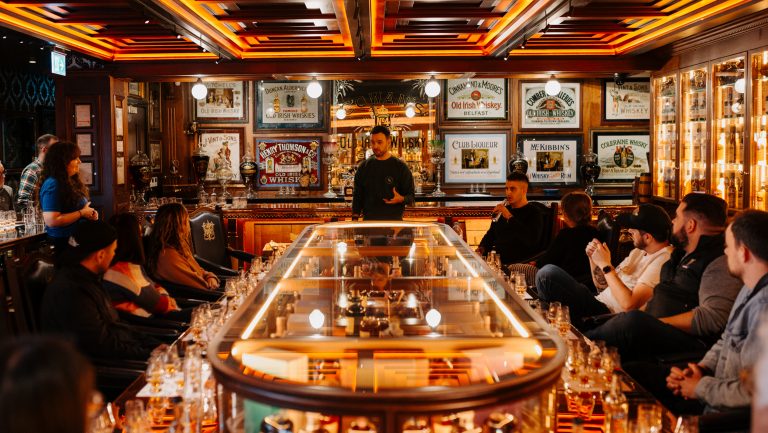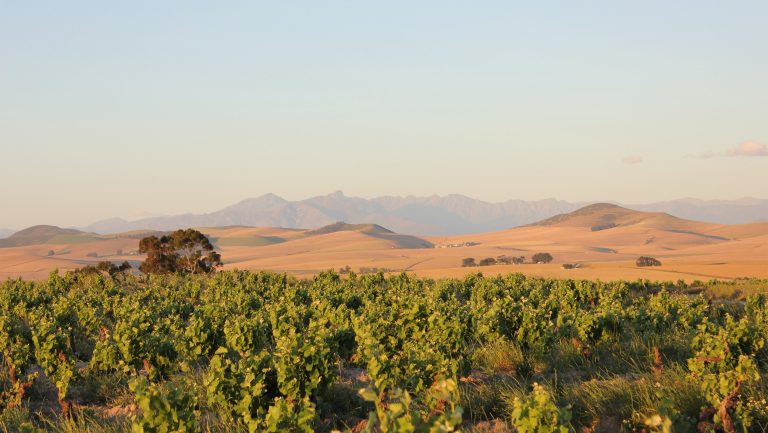After a day off, I returned to the high-end restaurant where I worked to find a box with seven bottles of Pierre Gonon’s 2013 Saint-Joseph inside: open, full, and re-corked. I couldn’t figure out why these bottles were all open, so I—admittedly peevish—went to the sommeliers on my team to find out what happened. In the previous night’s dinner service, a sommelier had opened a bottle for a table, and it “just didn’t seem right” to him. He had a hard time describing what was wrong with the wine, but in an honorable attempt to be good to the guest, he opened a second bottle. My coworker’s anxiety grew: The second bottle, and then the third, were all the same.
I’ll leave aside that it wasn’t exactly prudent to open seven bottles to try to find a good one. What was more important to me was to understand what it was about the Gonon that my sommelier considered flawed. I tasted each open bottle myself. There was a marked astringency and also a slight bitterness to the wine, not a quality I’d observed in Gonon before, and all the bottles had it. Okay, so, maybe it wasn’t a perfect expression of this wine, but—was it really off? Would I have refrained from serving that bottle to guests?
I suspect that my coworker reacted with trepidation to the Gonon for a reason: Both the rustic style and more “natural” manner of production resulted in a wine with qualities unfamiliar to him. He was accustomed to northern Rhône Syrah with a certain predictability and polish; Gonon’s wine by comparison is more expressive, less static, and far less modern in styling than those my coworker had presumably encountered. Certainly, Gonon is nothing like the loads of conventional, completely bland Saint-Joseph available for purchase—with a rather large area of 920 hectares under vine in the appellation, bland wine is bound to occur. To be fair, neither my sommelier nor I could identify what was making the Gonon astringent, though my best guess was that volatile acidity was rendering the wine a little screechy. Some consider that a flaw for which to reject a wine. For me, it was an imperfect expression of the wine, but one I knew might change or resolve itself with time. My personal preference would have been to communicate what I thought was happening with the wine to the guest, and offer it to them to make the final decision on whether or not they were happy with it.

Don’t miss the latest drinks industry news and insights. Sign up for our award-winning newsletters and get insider intel, resources, and trends delivered to your inbox every week.
Even with excellent natural producers, sometimes there’s a rough vintage, or wines can go through a difficult moment, as it seemed with the ’13 Saint-Joseph in question. These things can happen; wine that isn’t over-produced is a moving target. These kinds of wines change like much in nature does: They move in phases. Some even seem to have moods—one day I’ll open a bottle and it’s a joy, the next it’s quiet, closed up. I choose to be patient with these day-to-day differences, because these high-quality natural wines are often worth the payoff of not being able to predict them with mathematical precision.
With the knowledge that some will disagree, my understanding of “natural wine producer” is the following. The Gonon brothers farm their nine hectares of land organically. When needed, they replant their vines in the selection massale method, taking cuttings from their own plots. They utilize big, old-fashioned wood vessels for fermentation—and they do it open-top, also an old practice and one that can be a more risky way to let fermentation do its thing. They use judicious, low levels of sulfur dioxide.
When I say “natural wine,” I don’t mean funky, murky Kool-Aid with zero reference to place and a graffiti label. I’m talking about grapes that are farmed and wines that are made in a holistic, healthy manner—without Round-Up or Monsanto products in the vineyard; or secret garbage additives in the cellar, like, say, the colorant and concentrate Mega Purple; or 350 milligrams per liter of added sulfur. Sometimes natural farming practices and accompanying styles of winemaking result in more rough-hewn, raw wines. Sometimes these practices result in pristine, magisterial bottlings.
Talking about natural wine at all seems to have annoyed wine industry professionals; the discourse around it is often cynical or oversimplified. I think we should remember that guests in our restaurants and the majority of the American wine-drinking public usually have never tasted anything near Gonon Saint-Joseph. Of course, this isn’t a new discussion. Great journalists and big names have been parsing the rise of low-intervention winemaking and biodynamic farming practices for probably twenty years. But I argue that natural wines have a place in every type of restaurant—not just the new-wave bistros in Paris, tasting menu restaurants in Copenhagen, or casual, rowdy joints in Brooklyn. If natural wines aren’t flawed by bacterial issues, poor winemaking, or a lack of a sense of terroir, there’s no reason they shouldn’t sell just as well as conventional wines that deliver only what an average guest is used to drinking. To sell them, I simply have to talk about things more, do a little more teaching. I have to engage both my staff and my guests, consistently and repeatedly, to get the understanding these wines require.
Some six or eight months after the Gonon debacle, I opened another bottle of the ’13. The wine had lost most of its sharp astringent quality, and the bitterness was fading, to reveal really charming black dirt and plum aromas and wild-strawberry, scrub brush flavors. The wine was moving toward harmony; it just needed some time.
I tell this Gonon tale to illustrate a thing I think we should do more, which is to talk genuinely to a guest or a coworker about what might make a wine taste different from anything they’ve seen before. In the established, fancy restaurants on the Upper West Side where I recently worked, I poured multiple natural wines by the glass to great success with guests. The trick was to ensure that staff understood what to expect from these wines, what causes the wines to look and taste a little different, and how to articulate as much gracefully, without alienating anyone. Put plainly, I had to teach my team how to work with new products, just like a chef provides recipe notes on a new dish for the front of house.
So, at a white-tablecloth restaurant with a clientele often charmed by luxury and status, I poured Domaine du Pech’s Le Pech Abusé 2009, a ruddy, ripe, deeply rustic red from the region of Buzet in France’s Southwest. Instead of offering an American Cabernet Sauvignon or Bordeaux by the glass, which our guests would be sure to understand, I offered this wine—from an unknown appellation and producer—for months. This wasn’t to be antagonistic: Domaine du Pech makes honest, delicious blends of Cabernet Sauvignon, Cabernet Franc, and Merlot. The wines are ripe, rough, irresistible. I wanted to share. Not one guest ever noticed that the wine had particular aromas arising from brettanomyces—barnyard notes, albeit subtle—because the wine tasted great. No one noticed that the wine was unfiltered or unsulfured. No one called it “strange” or even “bad.” I only ever had two or three guests reject it for something else, and I had dozens look up at me and declare that they loved it. Very natural, very rustic wine—I must have sold 50 cases in six months.
There were other great successes by the glass, too: Sepp Müster’s Vom Opok, a springlike Sauvignon Blanc–Morillon blend from Austria’s Südsteiermark. Mas Candí’s Desig, its searing entry-level Xarel-lo from Spain’s Penedès. Enderle & Moll’s exquisite Liaison Pinot Noir, from Baden in Germany. I love these wines, and I was so happy to see them succeed in an environment where many expect they won’t perform well—too unusual, too hip. The truth of wine reveals itself in the glass, in drinking it, especially with food. I had more than one well-to-do guest snap photos of these wines on their phones.
Of course, I’m not the only one to think this way and to work these wines into fine-dining wine programs. Even if the list at a fine-dining or high-end establishment isn’t completely comprised of natural wine, to include it at all demonstrates a willingness to explore and an awareness of the times. In New York alone, numerous sommeliers are finding a place for these wines in fine dining. Aldo Sohm carries Dupasquier, Domaine du Collier, and Antica Terra at his wine bar. Michelle Biscieglia at Blue Hill lists Richard Stávek, Marco di Bartoli, and Hervé Souhaut. Jeff Porter at Del Posto has Paolo Bea, Emmanuel Brochet, and Fattoria San Lorenzo. Juliette Pope, previously the wine director at Gramercy Tavern, had significant space on her list dedicated to such producers, including Vouette & Sorbée, The Eyrie Vineyards, and Gramenon.
After all, what’s the point of being a sommelier if you’re not doing this very thing—educating yourself about philosophies of viticulture and winemaking around the world and the changing trends in wine drinking? Why bother building a list if you don’t love teaching about and sharing wine, in its remarkable diversity? Why stock wines that taste the same as all the other wines on the shelf, that provide nothing of specificity beyond “This one’s red and that one’s white”? There’s one understanding of hospitality and wine service that says: Give a guest what they say they want, make money off of it, and don’t push discourse. As for me, I have always preferred dialogue over mute acquiescence. Besides, in my early stages of wine drinking, I thought I preferred to drink 16% Lodi Zinfandel to accompany my Harvest Cheddar Sun Chips. I am grateful I was led down a different path—one that walked me straight into loving lots of wine, but natural wines especially—by kind explanations from the engaged sommeliers who taught me.

Dispatch
Sign up for our award-winning newsletter
Don’t miss the latest drinks industry news and insights—delivered to your inbox every week.
Amanda Smeltz works as a sommelier in New York City. She spent several years as the wine director of Roberta’s Pizza and Blanca in Brooklyn and a year as the head sommelier for two Daniel Boulud restaurants. She is also the author of the poetry collection Imperial Bender.







